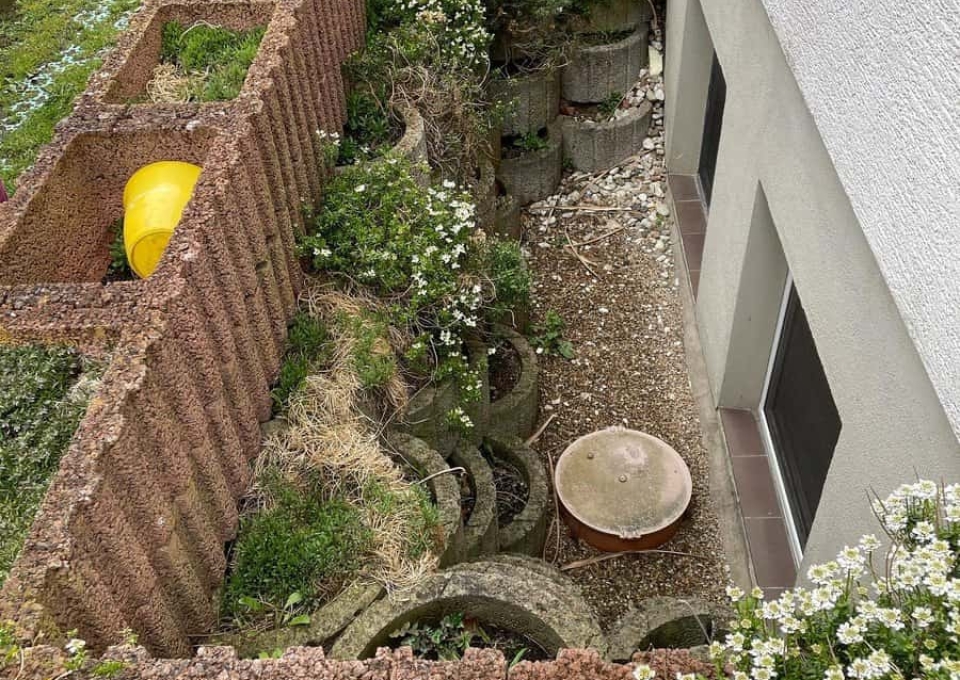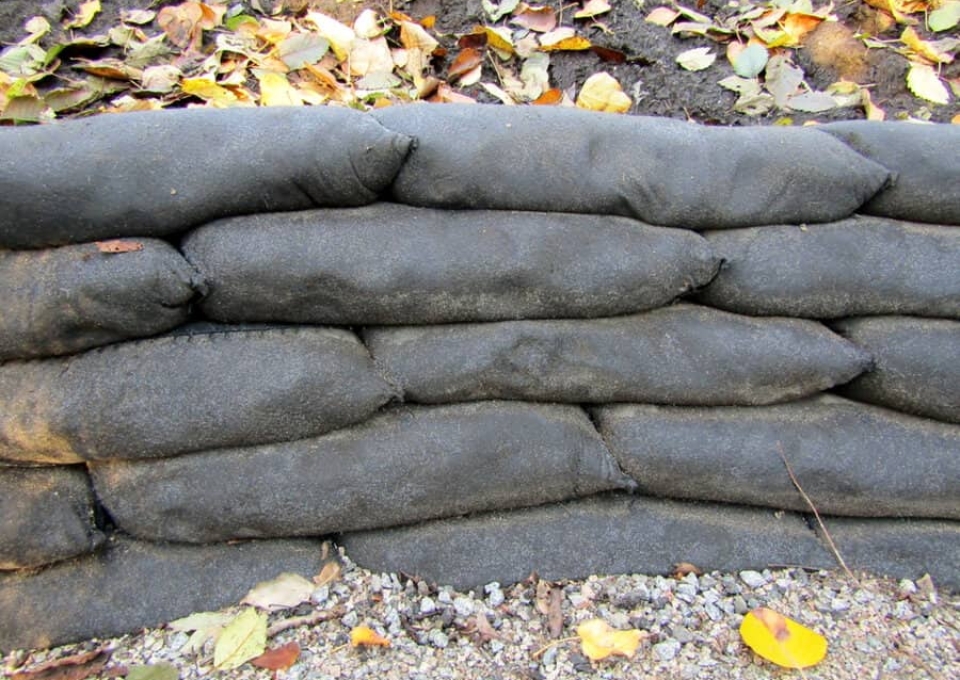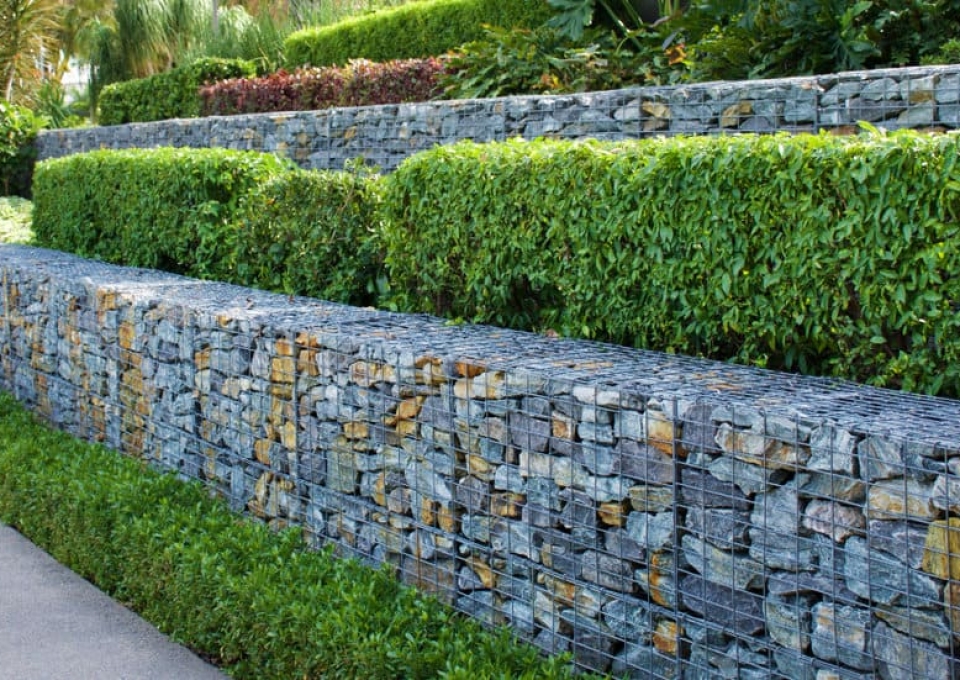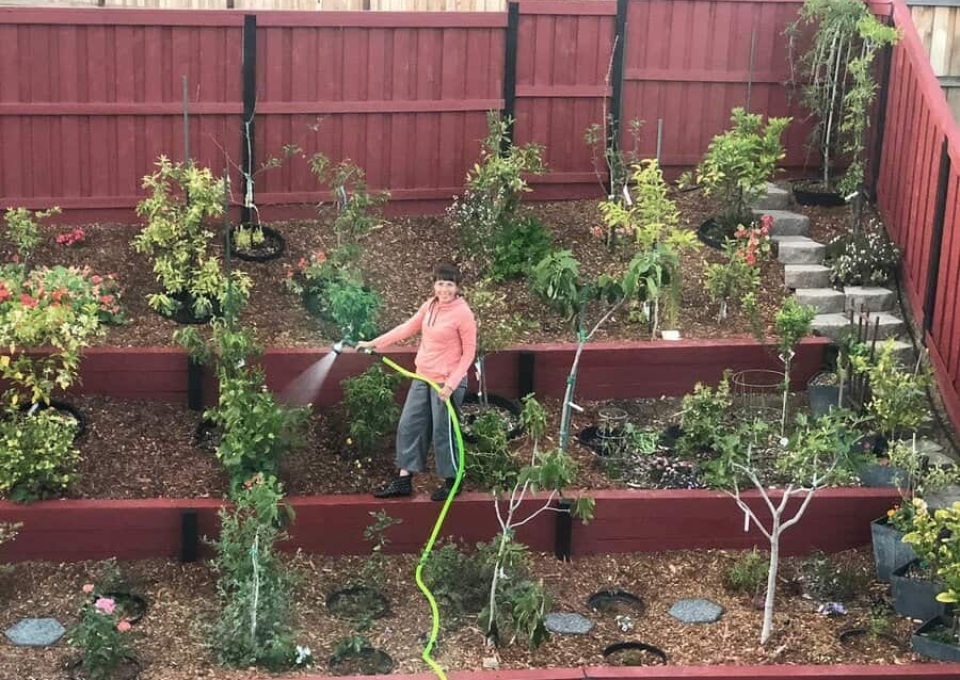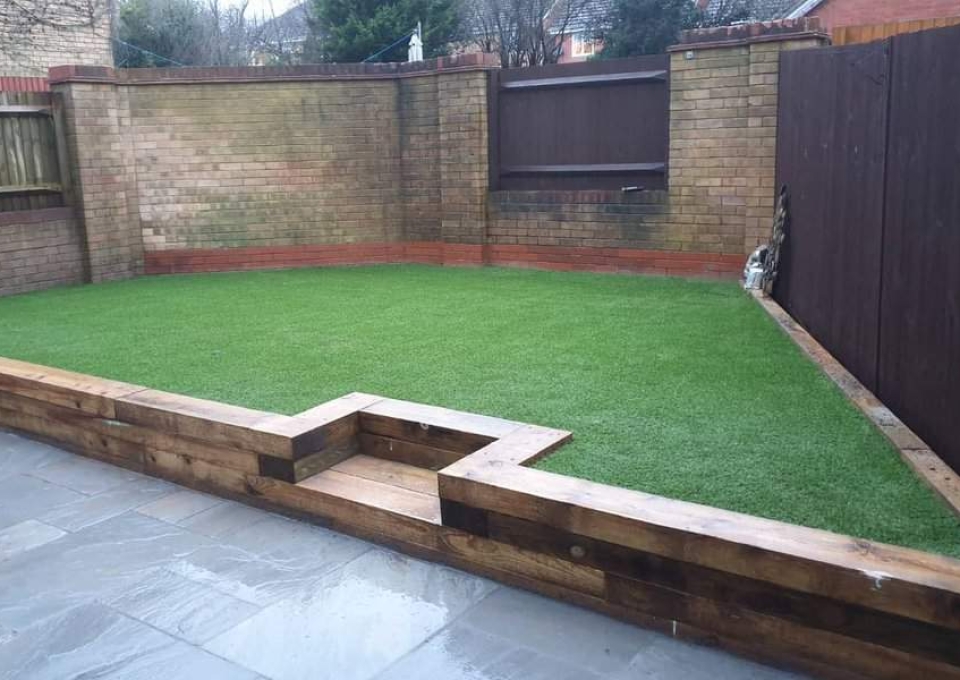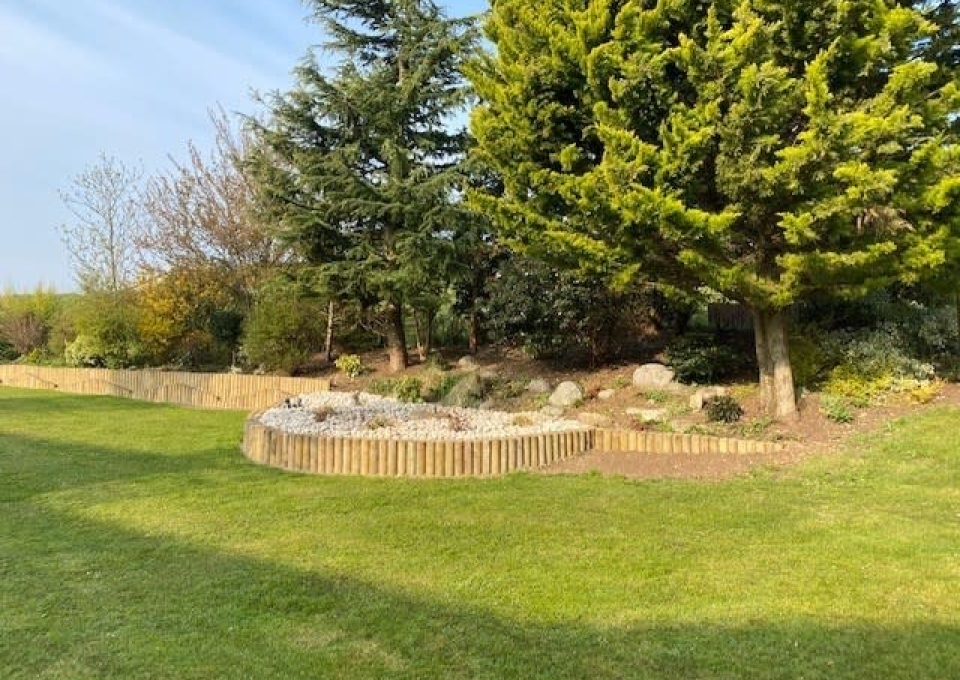Introduction to Retaining Walls
Contents

Definition and Purpose
Retaining walls are strong structures built to hold back soil at steep angles. They help manage elevation changes, prevent erosion, and provide stability in landscapes. This is essential in areas with uneven terrain or where elevation changes are needed for practical or aesthetic reasons.
Importance in Landscape Design
Retaining walls are essential in landscape design. They create terraces or level areas, increasing usable space and improving accessibility. Properly placed walls can turn a simple backyard into a visually appealing or functional garden area. They can also boost property value, making them a smart investment.
Types of Retaining Walls: Materials and Considerations

Overview of Different Materials
Selecting the appropriate material for a retaining wall is crucial, balancing cost, appearance, and durability. Common options include concrete blocks, natural stone, wood, and gabion. Each has distinct advantages and drawbacks.
- Concrete Blocks: Durable and versatile, concrete blocks offer a modern look with strong structural integrity. They are relatively easy to install and cost-effective.
- Natural Stone: Natural stone provides a classic, elegant appearance and is extremely durable. However, it can be more expensive and requires skilled installation.
- Wood: Wood offers a warm, natural aesthetic and is less expensive. However, it has a shorter lifespan due to susceptibility to rot and insect damage.
- Gabion: Gabion walls, made from cages filled with rocks, offer excellent drainage and blend well with natural surroundings. They are economical and environmentally friendly, though not as structurally strong as other options.
Each material has its own set of pros and cons, affecting both the initial cost and long-term maintenance. The choice depends on your specific needs, budget, and the desired look of your landscape.
Planning and Design Considerations for Retaining Walls

Assessing Your Landscape Needs
Identifying your landscape’s specific needs is crucial when planning a retaining wall. Evaluate the topography, soil type, and the wall’s intended function. Is it for visual appeal or structural support? These factors will influence your choice of materials and design strategy.
Legal and Safety Considerations
- Zoning Laws: Verify local zoning regulations before starting construction. These rules specify wall height, materials, and required distances from property lines.
- Building Permits: Retaining walls above a certain height often need a permit. Ensure you comply to avoid legal issues.
- Safety Measures: Assess the wall’s stability and its impact on surrounding areas. Proper drainage is essential to prevent water pressure from compromising the wall’s stability.
Addressing these considerations early ensures a smoother project and enhances the safety and legality of your construction.
Advantages of Retaining Walls

Erosion Control
Retaining walls are highly effective for erosion control, crucial for maintaining your landscape’s stability. By securing soil, these structures prevent the downward movement that can cause significant land damage. This is particularly important in areas with heavy rainfall or steep terrain.
Aesthetic Enhancement
Retaining walls significantly boost the visual appeal of your landscape. They provide a structured look that can be customized to fit any design. Choose wooden walls for a rustic feel or natural stone for a more elegant appearance. These walls become a key feature that enhances the overall look of your outdoor area.
Increased Usable Space
- Level Terraces: Transforming sloped land into terraced sections with retaining walls creates more usable space. This opens up opportunities for landscaping, such as gardens or patios.
- Functional Areas: These terraces can serve various purposes, like outdoor living spaces or vegetable gardens, enhancing your property’s functionality.
Cost Considerations for Retaining Walls
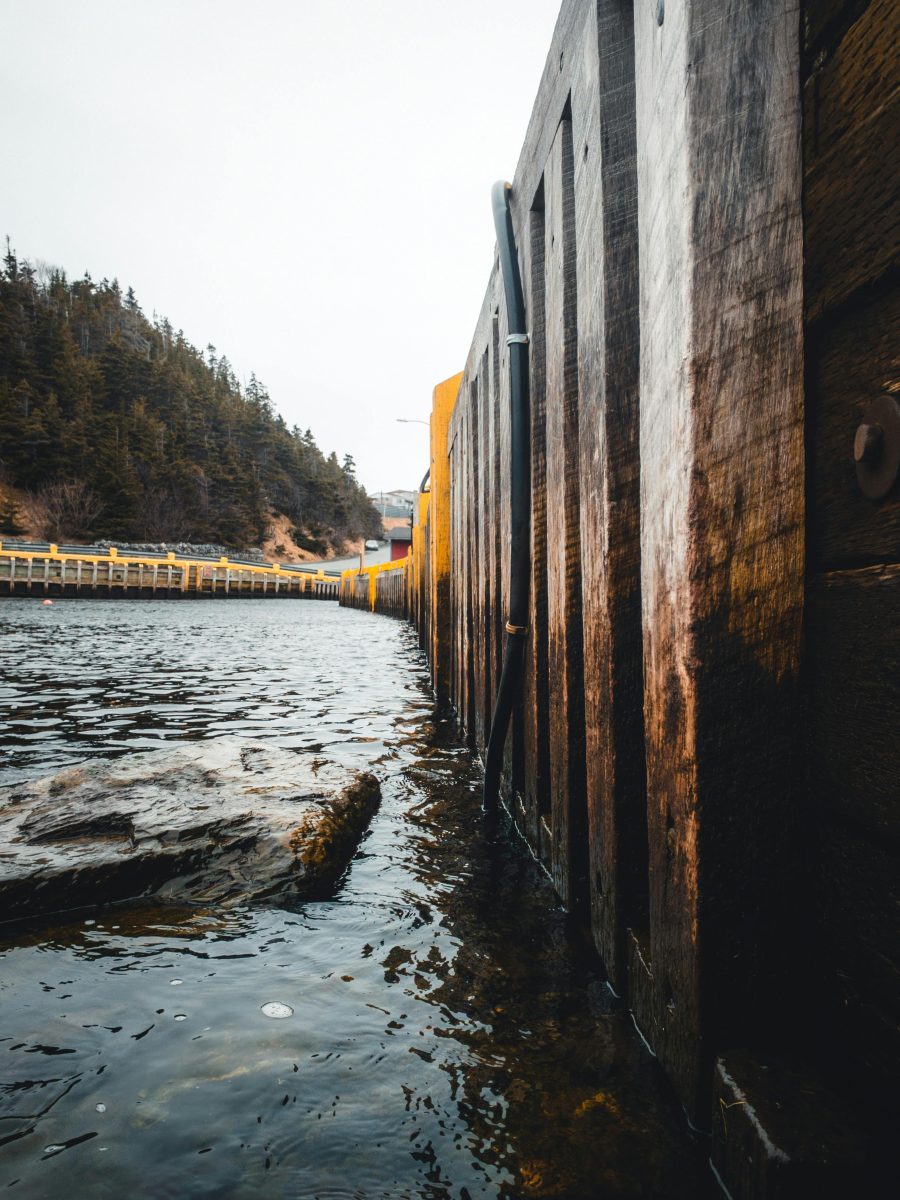
Estimating Your Budget
Accurately estimating the budget for a retaining wall is crucial. Begin by assessing the size and scope of your project. Material costs can vary significantly, with wood being more affordable and natural stone being more expensive. Remember to include labor costs, especially for materials that need specialized installation skills. Conducting a detailed cost analysis upfront can help avoid budget overruns and keep the project on track.
Long-term Savings
- Material Durability: Choosing durable materials like concrete blocks or natural stone can result in substantial long-term savings. These materials typically need less maintenance and can endure severe weather, minimizing the need for expensive repairs.
- Efficient Design: A well-thought-out design not only fulfills your aesthetic and functional requirements but also maximizes material use and labor, reducing unnecessary costs.
- Preventative Measures: Adding features like proper drainage systems can prevent water damage and soil erosion, which is essential for maintaining the wall’s integrity and avoiding future expenses.
Preparation Steps for Building Retaining Walls

Site Assessment
Start with a comprehensive evaluation of the site. Analyze the topography and soil conditions to identify the optimal location and design for your retaining wall. This step is essential for ensuring the wall’s stability and effectiveness in retaining soil.
Material Selection
- Concrete Blocks: Cost-effective and durable.
- Natural Stone: High-end appearance with a higher cost.
- Wood: Affordable and natural-looking, but needs more upkeep.
- Gabion: Budget-friendly and eco-conscious, great for rugged landscapes.
DIY vs. Professional Installation
Choosing between DIY and professional installation depends on your expertise, project complexity, and budget. DIY can save money but may affect quality if not done properly. Professional installation, though more expensive, ensures durability, safety, and compliance with legal standards.
Cost-Effective Retaining Wall Design Ideas
Concrete Sleeper Wall: A Blend of Strength and Style
Imagine a retaining wall that combines durability with modern aesthetics. Concrete sleeper walls offer a strong solution for your outdoor space. Precast concrete sleepers, the core of these structures, provide excellent protection against the elements.
These walls are not just about strength. They reflect contemporary design, ideal for creating raised garden beds, leveling uneven ground, and preventing soil erosion. Maintenance is minimal. Concrete sleepers are resistant to decay, pests, and weather.
You can customize with various colors, textures, and sizes. These walls can match your vision, enhancing your landscape effectively. Whether installed professionally or as a DIY project, they offer lasting stability and style.
Let the images below inspire you. Each snapshot showcases the essence of concrete sleeper walls, helping you reimagine your outdoor space.
Innovative DIY Retaining Wall Ideas
Unlock the potential of your outdoor space with DIY retaining wall ideas that combine cost-efficiency and creativity. These designs not only support your landscape but also showcase your personal style. Transform the ordinary into something special with a few clever touches.
Consider a retaining wall made from *sacks filled with soil*—an eco-friendly option that blends seamlessly with the environment. Alternatively, use *stacked tires* for a bold, industrial look that also promotes sustainability. For a unique twist, create a living wall with a mosaic of *potted plants* that thrive throughout the year.
Success in these projects requires careful planning. Pay attention to site-specific factors like drainage and stability. With basic construction skills, you can build a durable feature that enhances your property’s value and your enjoyment.
Feast your eyes on the possibilities:
Gabion Retaining Walls: A Symphony of Strength and Style
Imagine a retaining wall that not only secures your landscape but also adds a modern touch. Gabion retaining walls achieve this vision. These structures, made of wire mesh and stones, fit seamlessly with any design theme, providing both strength and elegance.
Their durability ensures excellent drainage and resistance to natural forces. The flexibility of gabion walls allows for a customized design, reflecting the unique tastes of each homeowner.
With minimal upkeep, these walls offer long-lasting performance. If any section wears out, it can be easily replaced, maintaining the wall’s integrity.
Explore the visual appeal that gabion walls can offer:
Featured in our ’68 Inexpensive Retaining Wall Ideas’, gabion walls exemplify the balance of practicality and aesthetic appeal. They are not just functional structures but also enhance the landscape’s beauty.
Enhance Your Garden with Retaining Wall Beds
Imagine transforming a sloping garden into a vibrant display of blooms and lush plants, all securely held by the strength of retaining walls. These structures are not just practical; they blend function and design seamlessly. Retaining wall beds elevate your outdoor space, creating a visually appealing garden that combines nature’s beauty with structured design.
With the right choice of materials—whether it’s the rustic charm of timber, the timeless elegance of stone, or the modern appeal of concrete—your garden’s aesthetic is not just preserved but enhanced. These walls are not mere boundaries; they are the backbone of your garden, providing essential support and preventing soil erosion effectively.
Consider the possibilities: raised beds that bring your plants closer to the sun, tiered gardens that showcase a variety of species, and moisture control that ensures each plant thrives in optimal conditions. Retaining wall beds are not just about containment—they’re about creation.
These walls can also serve as the foundation for integrated seating, inviting guests to relax and enjoy the tranquility of your garden. To see just how captivating these designs can be, feast your eyes on these images:
Whether you’re crafting a serene retreat or a lively botanical showcase, retaining wall beds provide the structure needed to bring your garden vision to life.
Enhancing Landscapes with Retaining Walls
Retaining walls do more than hold back earth; they elevate your outdoor space into a gallery of natural beauty. Imagine transforming a slope into a terraced canvas, ready for your personal touch of greenery, seating, or culinary delights under the open sky.
The choice of materials is a testament to your taste and the landscape’s needs. Timber offers a natural look, stone provides durability, and concrete gives a modern feel. Each option not only enhances your aesthetic but also withstands the elements.
A strategically placed retaining wall is more than a boundary; it supports your garden, allowing it to thrive, or serves as a backdrop for water features and sculptures.
These walls are designed to manage water flow and resist earth pressure, ensuring longevity and stability.
Cost-effective solutions need not sacrifice style. Behold the possibilities:
Let these walls inspire your next landscape transformation, proving that practicality and elegance can indeed coexist.
Embrace the Rustic Charm of Log Retaining Walls
Discover the practical and aesthetic benefits of log retaining walls. These structures combine natural beauty with functionality, adding a rustic touch to any landscape. Made from interlocking logs, they are ideal for rural or woodland settings.
To ensure longevity, use treated logs that resist decay and pests. Regular inspections and timely log replacements are crucial for maintaining structural integrity.
Consider these walls as a versatile element in your landscape design:
Whether you’re tackling a DIY project or hiring professionals, the key is to select straight, sturdy logs for stability. Let log retaining walls enhance your next project with their sustainable and appealing design.
In Closing
Retaining walls combine practicality with visual appeal, making them a cost-effective way to enhance landscapes. These structures prevent erosion and increase usable space and property value through thoughtful design. By selecting appropriate materials and planning effectively, homeowners can achieve long-lasting and attractive results. Utilize these solutions to improve your outdoor living area, ensuring both stability and style for years to come.

